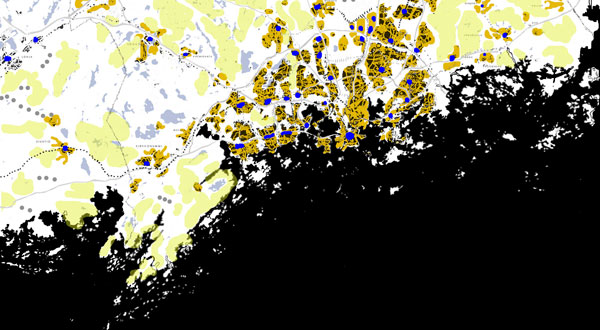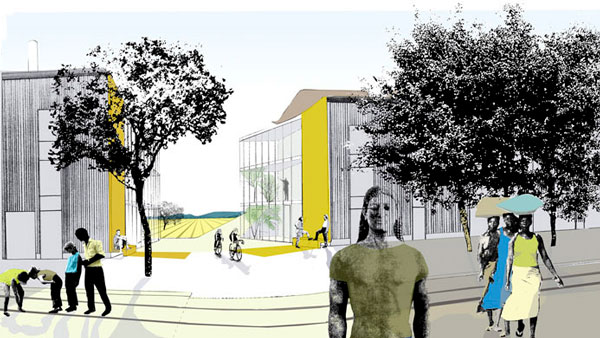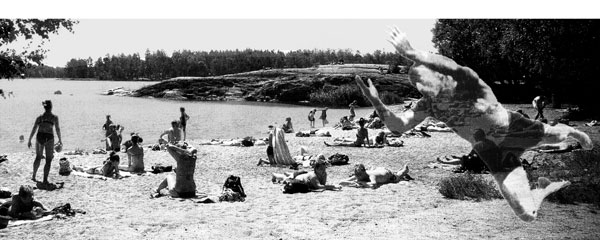HELSINKI 2050 VISION
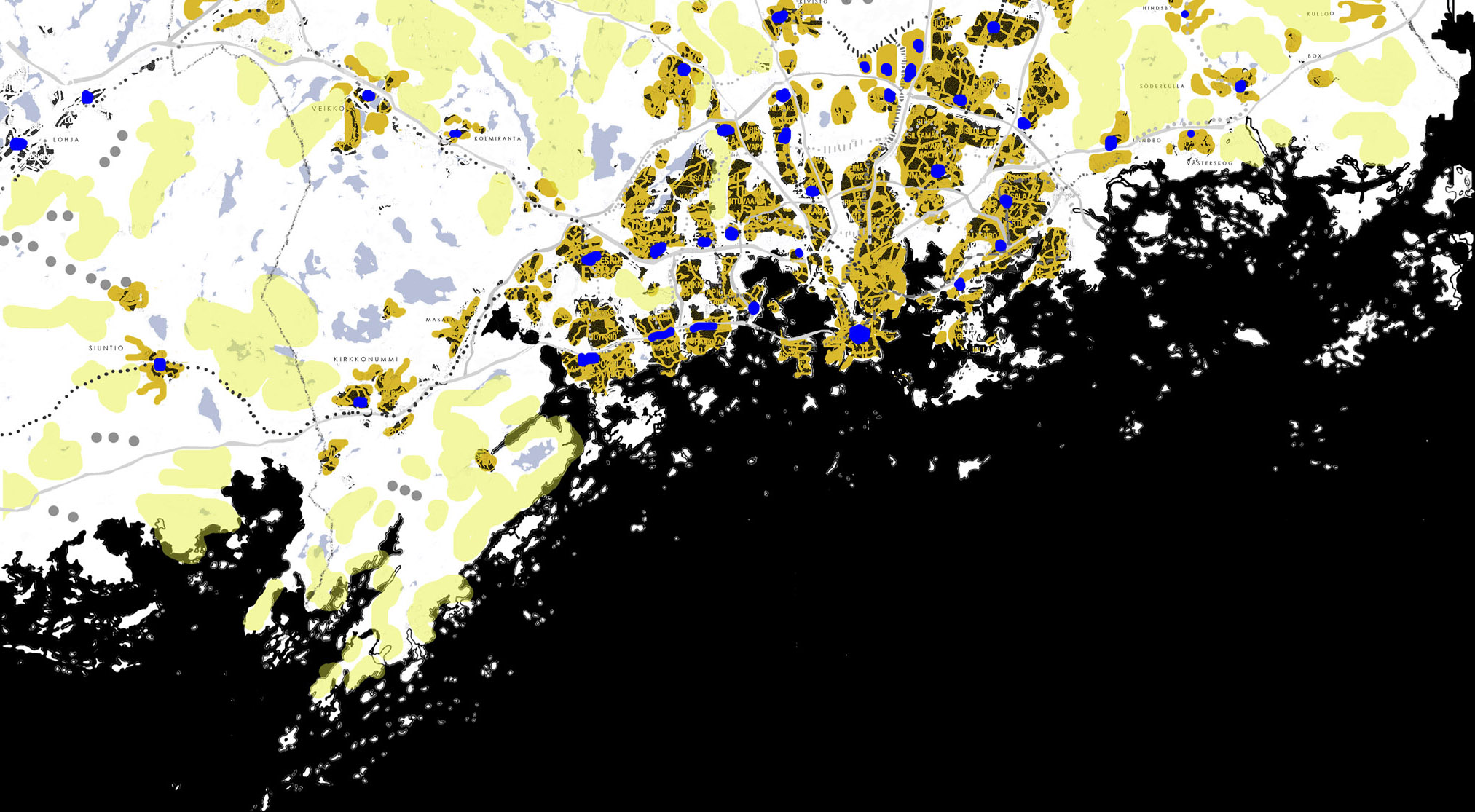
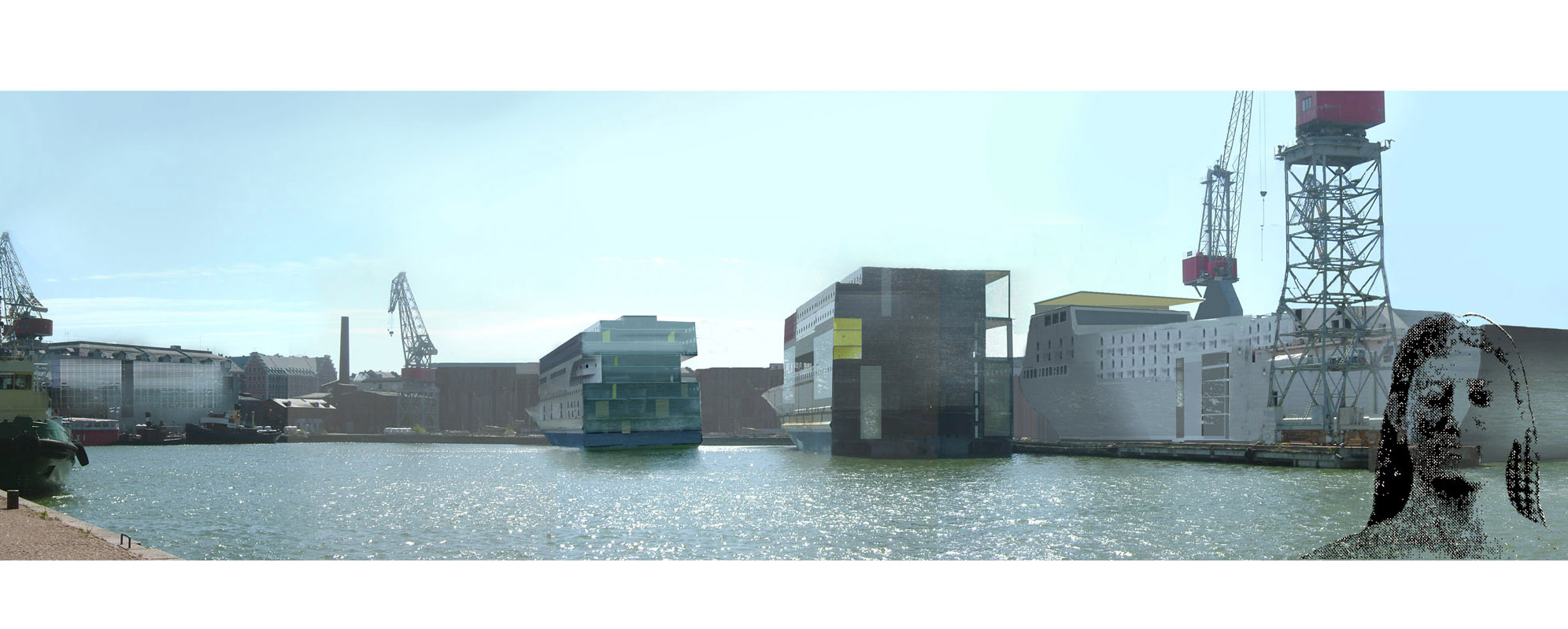
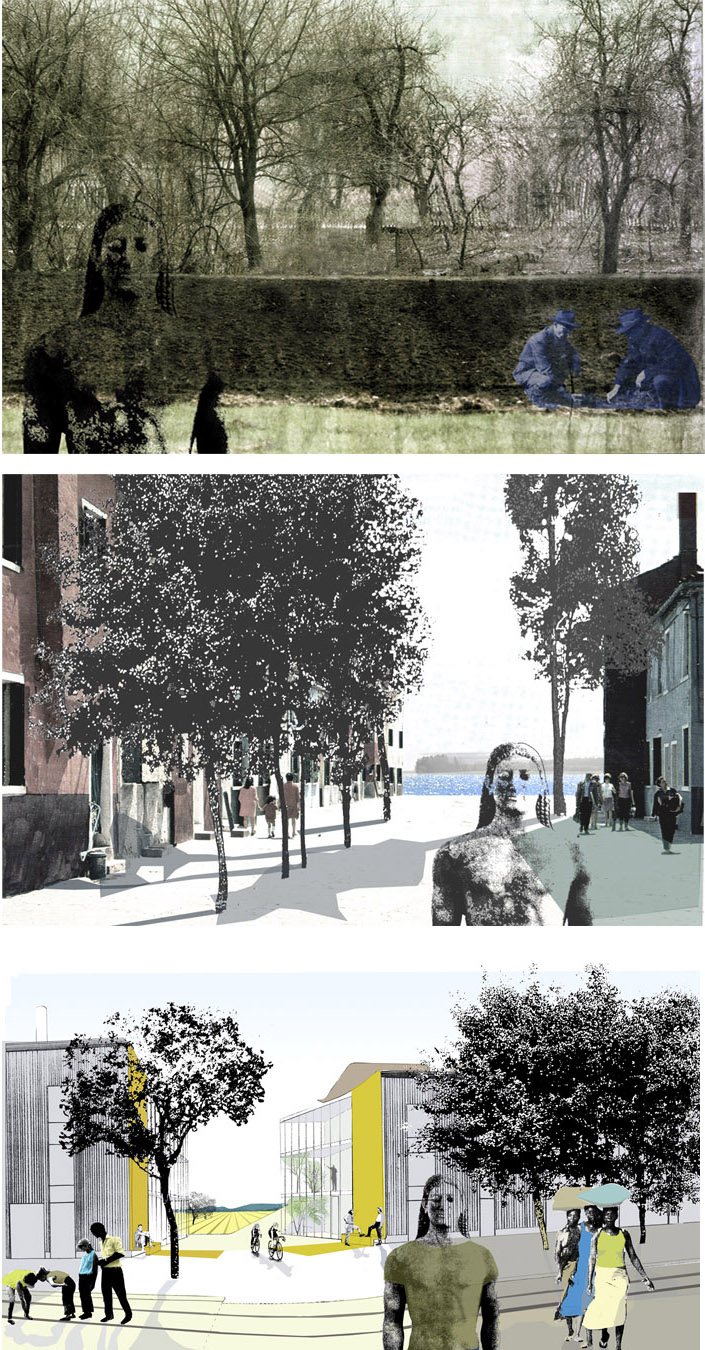
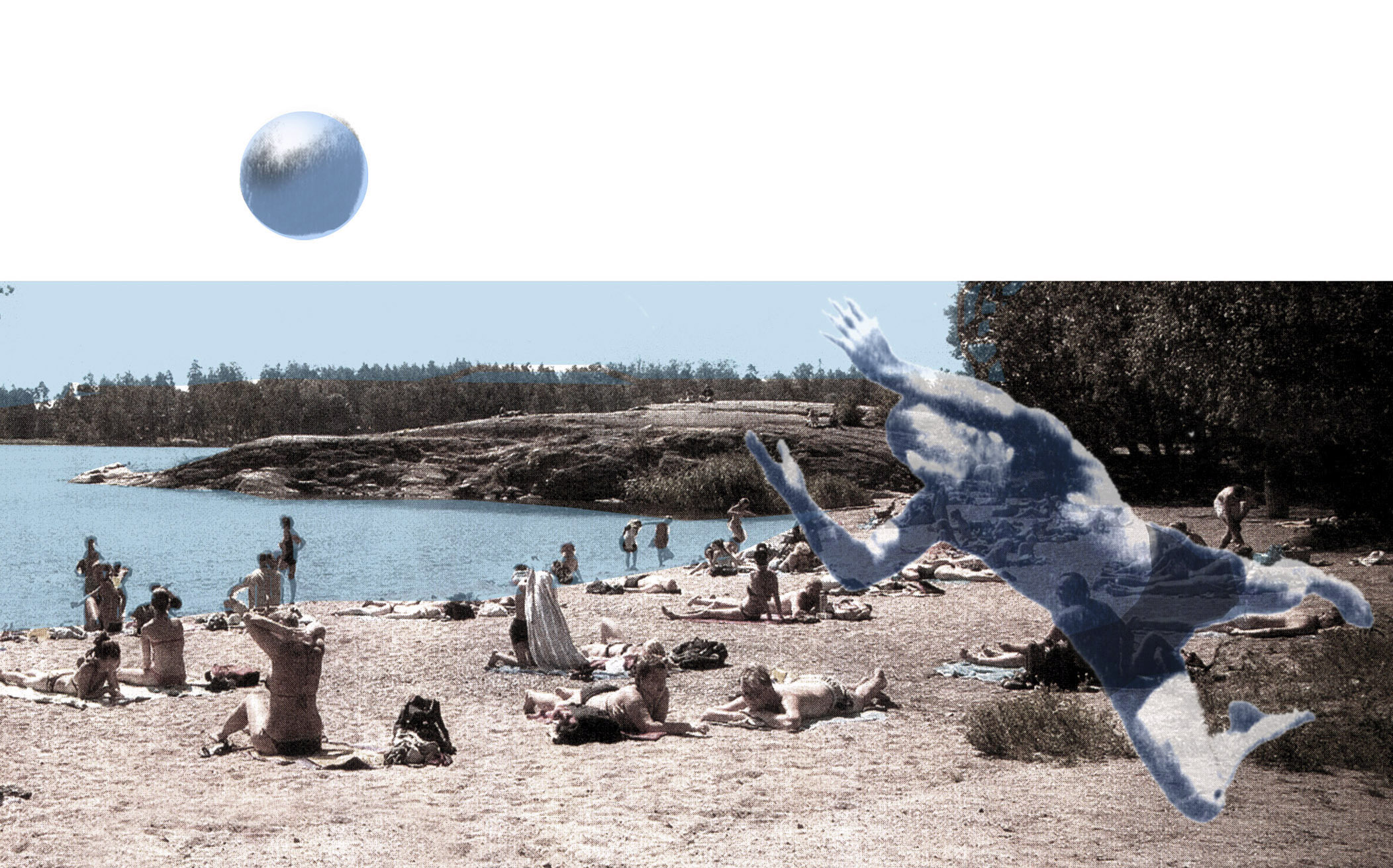
HELSINKI 2050 VISION
Kilpailuehdotus ´Roots´ vuodelta 2007 yhdessä arkkitehti Pekka Hännisen ja työryhmän kanssa.
Käänsimme kartat ylösalaisin, jolloin pohjoisnuoli osoitti alaspäin. Tästä syntyi ehdotuksen kantava ajatus: maaseutu muodostaa pääkaupunkiseudulle ja sitä ympäröiville alueille juuret, joiden kautta kaupunkeja ja kyliä ruokitaan.
Puu, jolla on syvät juuret, ei kaadu kovassakaan tuulessa.
Mielestämme tärkeä tavoite on säilyttää mahdollisuudet siihen, että alue voi toimia omavaraisena niin ravinnon kuin energiankin suhteen vuoteen 2050 mennessä. `Juuret´ nivoo energian, luonnon, ihmisen ja rakennetun ympäristön kokonaisuudeksi, jossa ihmisten on mahdollista saada kaiken päivittäiseen elämäänsä tarvitsemansa kilpailualueelta. Meren rantaan luodaan puskurivyöhyke tuulia vastaan ja merenpinnan nousun varalle. Ainutlaatuinen Helsingin, Espoon ja Sipoon saaristoluonto säilytetään. Nykyisiä, kaupunginosien välisiä vihersormia vahvistetaan. Asutusta ohjataan maaseudulle kyliksi. Kylien välillä ja kylistä kaupunkiin liikutaan pikaraitiovaunuilla. Myös meren rannalle on kylistä suorat nopeat yhteydet. Kaupungin ympärille syntyy itsenäisten ja erilaiset identiteetit omaavien kylien verkosto.
Ehdotuksen näkymäkuvissa planssi-ihmisenä esiintyy muinainen etruski, viittaus ihmislajin pysyviin perustarpeisiin.
Edelleenkään, yli kymmenen vuotta kilpailun jälkeen julkista keskustelua ei käydä siitä, miten haavottuvaisia kaupungit ovat, jos esimerkiksi sähkön jakelu keskeytyy pitkäksi aikaa – syytä olisi.
´Roots´, entry for a competition, 2007. Submitted with architect Pekka Hänninen and the workgroup.
We turned a map upside down: the arrow marking the North now pointed downwards. It gave us an idea of the roots of a city; the countryside surrounding the metropolitan area feeds the city and villages.
A tree won’t fall even in the strongest wind when its roots run deep enough.
We believe it to be essential for any region to have means for self-sufficient food and energy production, before the year 2050. `Juuret´ or ´Roots´, ties energy, nature, people and infrastructure together to an entity, where everything required for everyday living is within reach in the competition area. A buffer zone will be created on the shores, against winds and sea-level rise. The unique nature of Helsinki, Espoo and Sipoo archipelago will be preserved. The current ‘green fingers’ of nature reaching between city districts will be strengthened. The population will be re-directed to villages in the countryside. Commuting between the villages and the city will be done by light rail. There are also fast connections to the seaside. The city will be surrounded by an independent network of villages, all of which have their characteristics.
The plate for humans in the illustrations is the ancient Etruscan – a reminder of the unchanging basic needs of a human being.
Ten years after our entry, there´s still no public discussion about how vulnerable our cities are, for example, if the main distribution of electricity is suddenly interrupted. There really ought to be alternative solutions.
